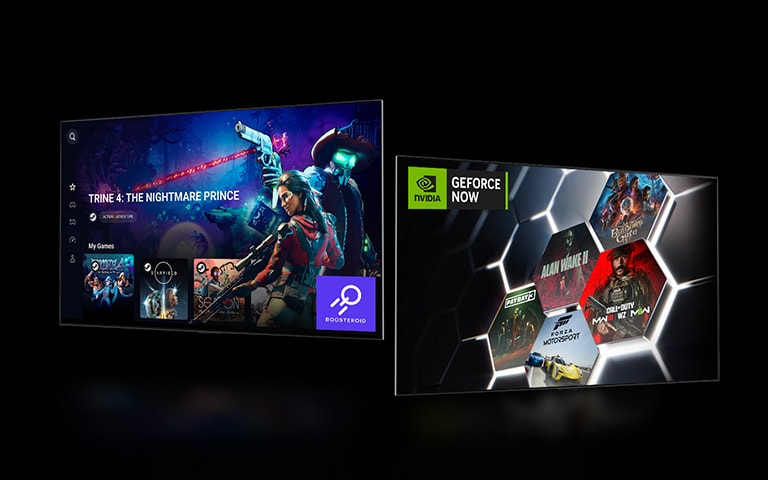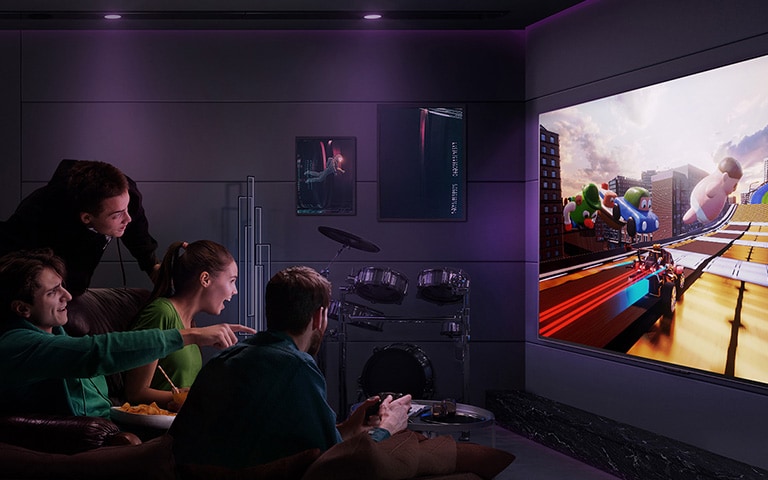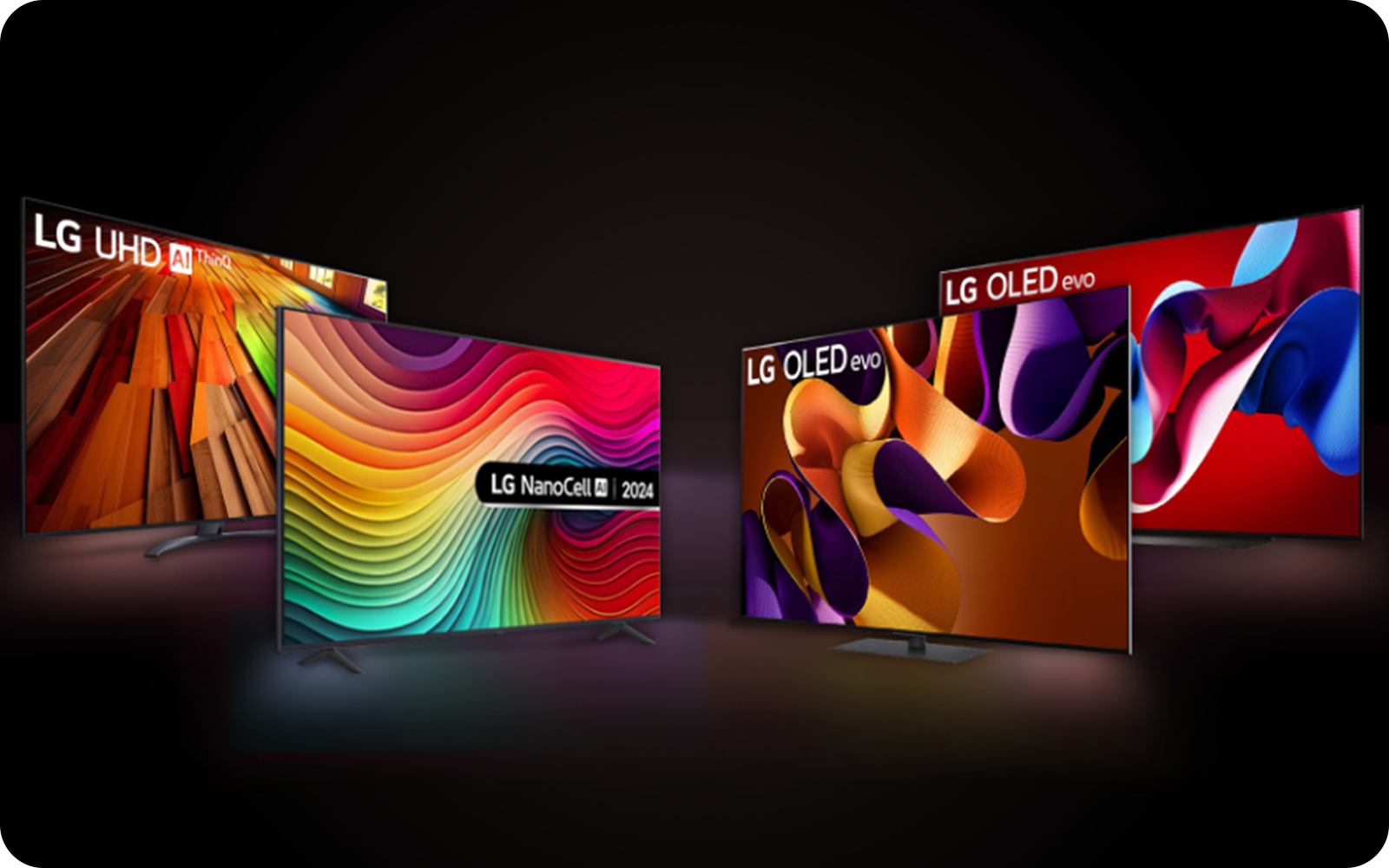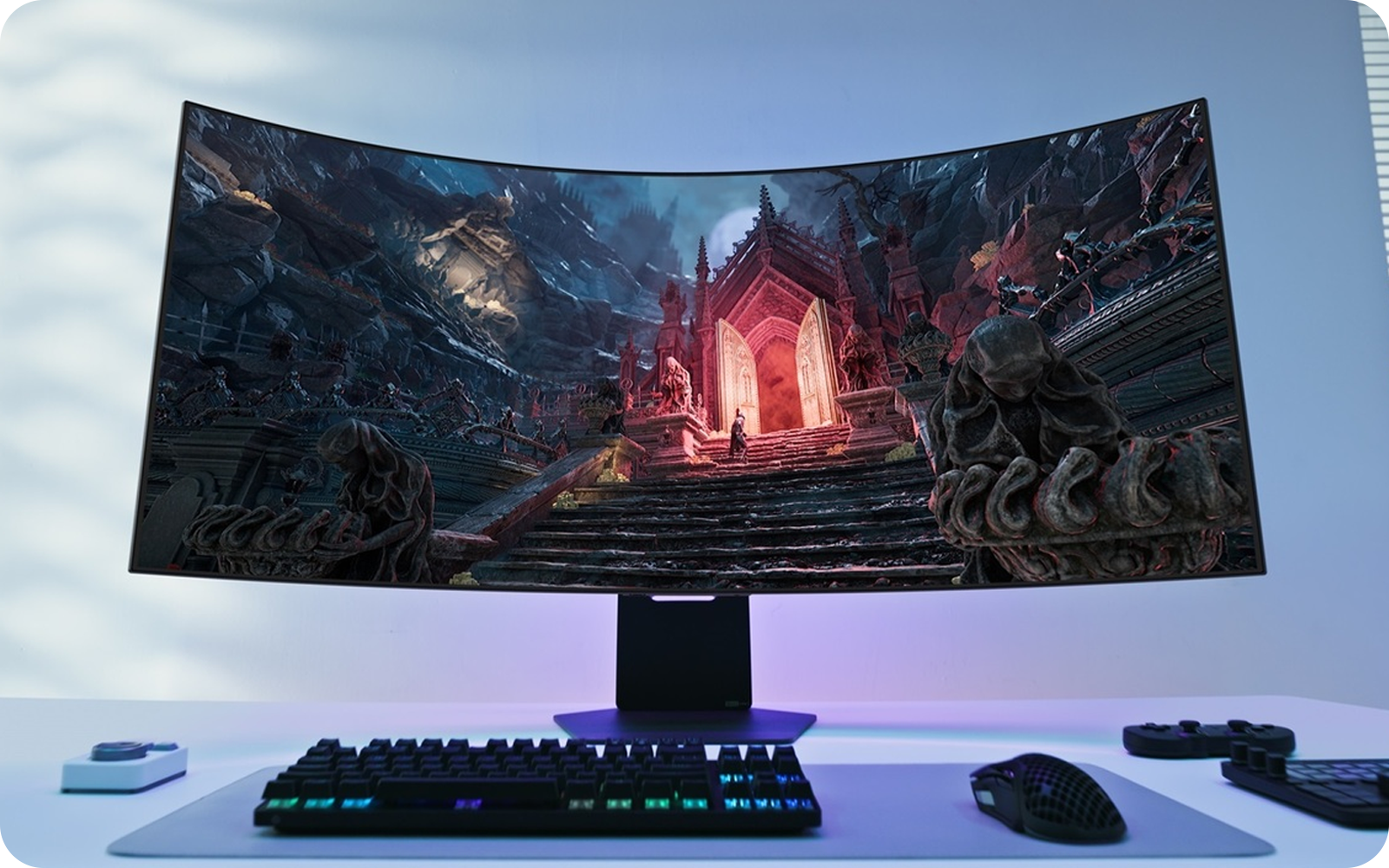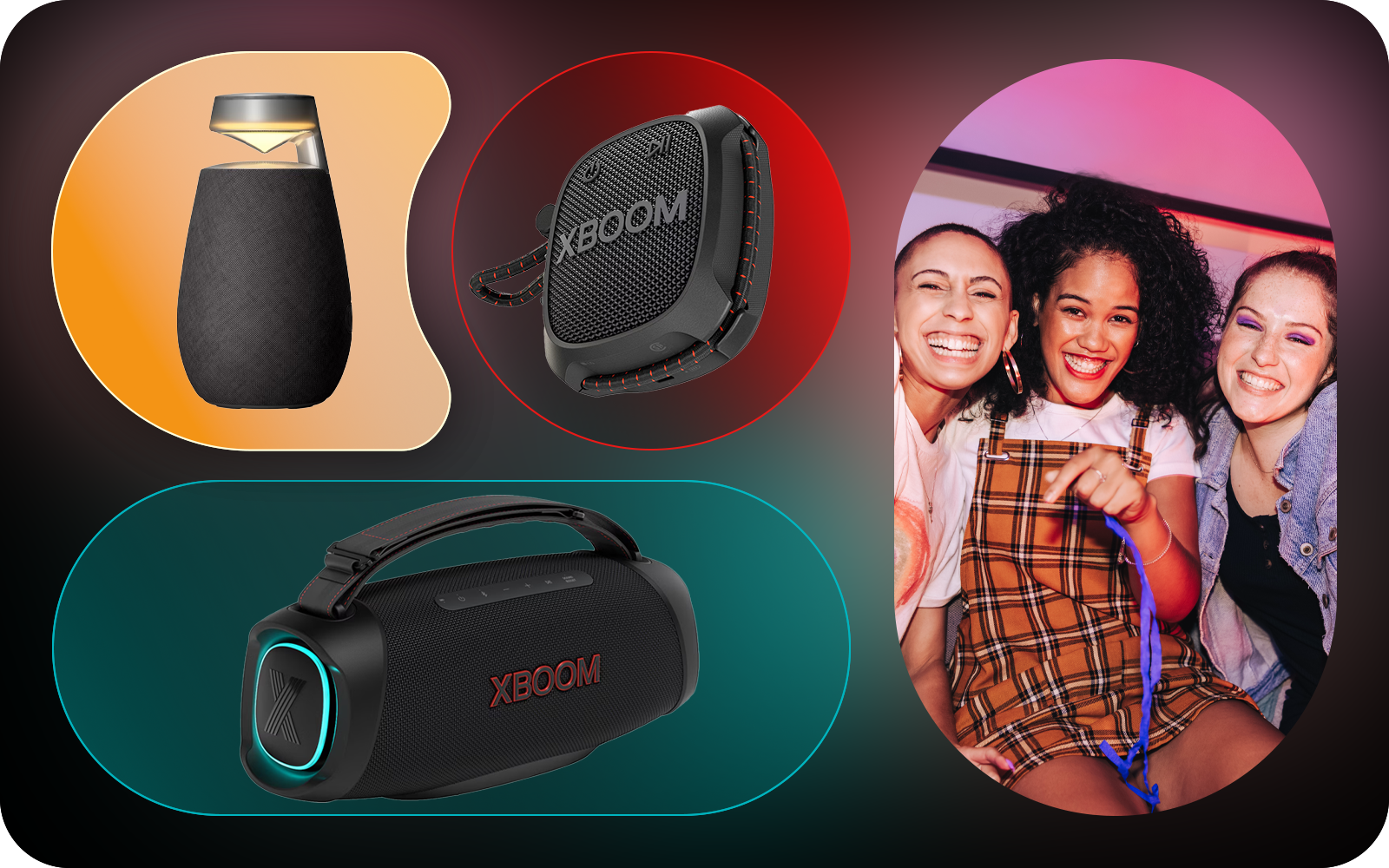We use cookies, including cookies from third parties, to enhance your user experience and the effectiveness of our marketing activities. These cookies are performance, analytics and advertising cookies, please see our Privacy and Cookie policy for further information. If you agree to all of our cookies select “Accept all” or select “Cookie Settings” to see which cookies we use and choose which ones you would like to accept.
LG LAB
Mini LED TV vs OLED TV
In this guide, we will explore:
- OLED’s ability to brighten, dim or power off individual pixels
- How Mini LED TVs utilise tiny diodes to produce a more precise and controlled form of backlight
- Differences between LED and Mini LED technology
- A detailed breakdown of the science and innovation behind Mini LED and OLED TVs
When the time comes to invest in a new television, picking the right one can feel like a tough task. As far as premium tech goes, OLED and Mini LED are two leading contenders; but what sets them apart? This in-depth guide will explore everything you need to know about both options.
What is OLED?
Unlike traditional LED or LCD screens, OLED (Organic Light Emitting Diode) panels are self-emissive, meaning each pixel emits its own light. This allows OLED TVs to achieve perfect blacks and an infinite contrast ratio, as individual pixels can be turned off completely.
What is Mini LED?
Mini LED is a newer way to make screens look better. This helps to make colours and brightness more accurate, giving you a clearer picture when you watch TV or use a monitor. It's a rival to OLED, another screen technology known for its deep blacks and vibrant colours.
The QNED evo* lineup is equipped with MiniLEDs precisely controlled by the new Alpha AI Processor, delivering ultra-sharp contrast and lifelike detail.
*LG QNED and QNED evo models are equipped with different colour solutions that utilise LG's latest and unique wide colour gamut technology, which includes replacing quantum dots.
What is QNED?
QNED (Qualified Nano Enhanced Display) provides vivid and lifelike colours thanks to LG’s own proprietary colour technology by adding various colour solutions* to nano particle based technology. LG QNED TVs are officially qualified products, as all 2025 QNED series have achieved 100% Colour Volume**.
*LG QNED and QNED evo models are equipped with different colour solutions that utilise LG's latest and unique wide colour gamut technology, which includes replacing quantum dots.
**100% Colour Volume: Display Colour Gamut Volume (CGV) is equivalent or exceeds the CGV of the DCI-P3 colour space as verified independently by Intertek. Applies to all QNED evo and QNED TV models released in 2025 and QNED99/90 models released in 2024.
QNED Mini LED vs. OLED
There is a way of simplifying things, and that is by explaining what LED actually means and why it is important.
What is LED?
LED stands for Light-Emitting Diode and describes what is used to backlight the display in a television. When it was first introduced, it offered better contrast, improved power efficiency and helped to reduce the weight and thickness of a television. Read more about LEDs in our guide to OLED vs LED.
What's the difference between QNED and OLED?
QNED and OLED are two different display technologies each offering a unique viewing experience.
For those who want rich colours and great clarity, LG's premium LCD brand, QNED is a great choice. QNED (Qualified Nano Enhanced Display) provides vivid and lifelike colours through LG’s own proprietary colour technology* by adding various colour solutions to nano particle based technology. In 2025, all LG QNED lineups is 100% Colour Volume** certified.
With a wide range of large screen sizes, QNED is ideal for sports fans, offering a powerful and immersive viewing experience on a bigger scale.
For those who want the ultimate viewing experience, LG OLED is an ideal choice for movie lovers and anyone who wants to enjoy content with exceptional cinematic depth. Our latest Alpha AI Processor continues to impress, delivering the bright colours and perfect blacks, even in bright light. UL-verified Perfect Black*** and Perfect Colour**** enhances perceived brightness and contrast with accurate colours, whether it's bright or dark around you.
On top of that, LG OLED is validated by G-sync and FreeSync Premium for excellent VRR performance, providing an exceptional visual experience with minimal tearing and stuttering.
*LG QNED and QNED evo models are equipped with different colour solutions that utilise LG's latest and unique wide colour gamut technology, which includes replacing quantum dots.
**100% Colour Volume: Display Colour Gamut Volume (CGV) is equivalent or exceeds the CGV of the DCI-P3 colour space as verified independently by Intertek. Applies to all QNED evo and QNED TV models released in 2025 and QNED99/90 models released in 2024.
***LG OLED Display is verified by UL for perfect black measured to IDMS 11.5 Ring-light Reflection, based on typical indoor lighting environment (200 lux to 500 lux).
Actual performance may vary depending on the ambient lighting and viewing environment.
****LG OLED Display is verified by UL for Perfect Colour measured to IDMS 11.5 Ring-light Reflection standards.
QNED Mini LED vs. OLED: What are the advantages?
QNED can deliver great contrast as well as more vibrand and vivid colours. (1)
When it comes to OLED displays, there is a reason they are recognised as the best on the market. Not only do OLED TVs boast incredible image quality, better contrast, a fuller viewing angle and wider colour range, but they have much faster refresh rates than their rivals.
OLED TVs are also ultra-thin, flexible and even foldable, enabling televisions to sit almost flush against the wall or even be rolled up and hidden within a state-of-the-art sound system. (2)
QNED Mini LED vs. OLED: Contrast and colour fidelity
With precise local dimming technology improved the contrast ratio in QNED with MiniLED. This is because blacks appear deeper, which in turn makes the colours even more vibrant.
This is also an area in which OLED TVs particularly stand out. Without a backlight, OLED’s Perfect Black production creates sharp, crisp contrast. And since each pixel can be controlled individually, on-screen colours closely match those of the original image—which translates to a much more vivid picture for the viewer.
QNED Mini LED vs. OLED: Response time
This is a key factor for gamers, as there is nothing worse than suffering from lag when playing online. And while some QNED Mini LED gaming monitors have a 1ms response rate—the time it takes for one pixel on the display to switch from one colour to another—OLED TVs are unrivalled.
In fact, OLED TVs boast an incredible response time of just 0.1ms. And they are the first in the industry to support Dolby Vision Gaming 4K at 120Hz, which provides more fluid and realistic gaming.
QNED MiniLED vs. OLED: Brightness
There is one clear winner and that is because QNED MiniLED packs more diodes and dimming zones into the screen. In fact, these TVs can hit peak brightness well above 1,000 nits—which is a measurement of how much light the TV screen sends to your eyes. To put this into perspective, an average TV may have the capability to output 100 to 200 nits.
OLED TVs may be outshone in this department, but they can produce more than 20 percent more luminance than non-OLED models. (3)
QNED Mini LED vs. OLED: Viewing angle
With precise local dimming technology improved the contrast ratio in QNED with MiniLED. OLED displays are unmatched when it comes to offering the best view from any seat in the house.
With an OLED TV, each pixel creates its own light and has the ability to be turned on or off extremely quickly, there is virtually no issue when viewing the screen from even the tightest of angles.
QNED Mini LED vs. OLED: Cost
QNED Mini LED televisions can sell for much less than their OLED counterparts and provide excellent value for money. High vibrance and competitive pricing make them a clear frontrunner for this QNED Mini LED vs. OLED face-off.
As a premium option, OLED TVs remain more expensive. But their wealth of groundbreaking features makes OLED the number-one choice for those who demand the best possible picture and don’t have to worry about your budget.
Which is better: QNED Mini LED or OLED?
So, is QNED better than OLED? It really just depends on what you’re looking for, as each display model caters for every different need. If you demand the very best clarity and colour performance, then OLED is supreme. There is no doubt that this premium product will make you the envy of your friends and family.
At the same time, QNED Mini LED displays offer impressive picture quality and unbeatable brightness at a moderately lower price point. If you’re looking for an elevated alternative to a traditional LED TV, you can’t go wrong with QNED Mini LED.
QNED Mini LED vs. OLED FAQs
Are QNED and Mini LED the same?
QNED and Mini LEDs are not the same, QNED TVs make use of Mini LEDs as a backlighting solution.
Is Mini LED better than OLED?
For best overall picture quality, OLED is supreme. However, Mini LED displays still offer impressive picture quality and unbeatable brightness at a moderately lower price point.
Which is better QNED or OLED?
OLED offers superior contrast to QNED due to its individually dimming pixels. However, QNED offers increased brightness. Both options offer fantastic colours, however if your viewing environment is not affected by bright sunlight, OLED should be the preferred choice.
Comparing QNED Mini LED vs. OLED technology can raise a lot of questions, but one thing is for sure; either of these TVs would be a great addition to any family’s home. Read more about types of TVs in our TV Buying Guide, and find out more about OLED in our OLED vs LED guide.
Life’s Good!
(1) Mini LED size was calculated using LG's internal measurement standards.
(2) Depending on the installation environment, there may be a slight gap between the TV and the wall.
(3) Compared to non OLED evo models and based on the Full White measurement. 42C2 and 48C2 are excluded.

